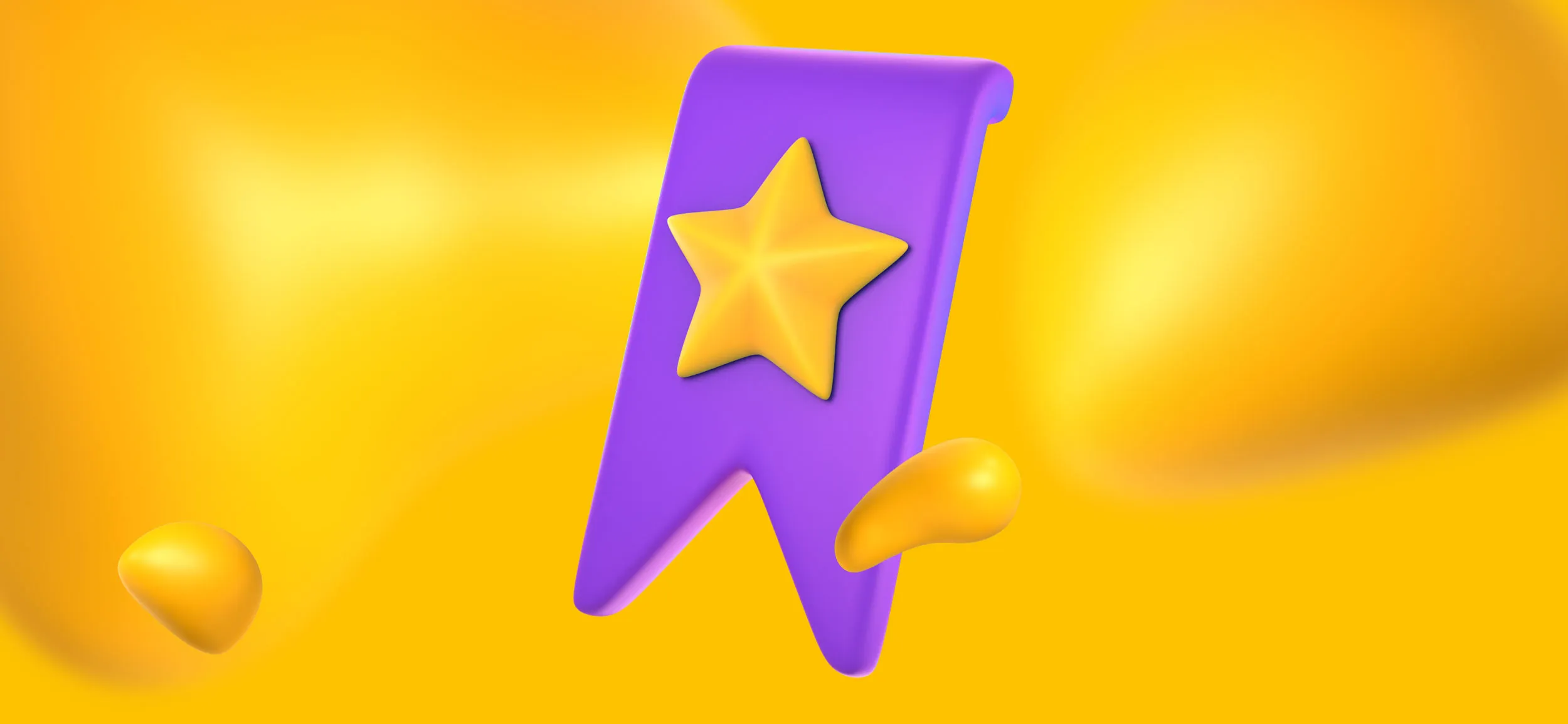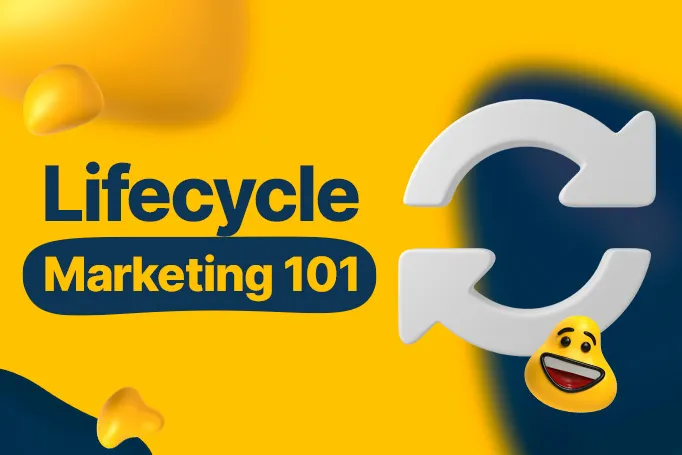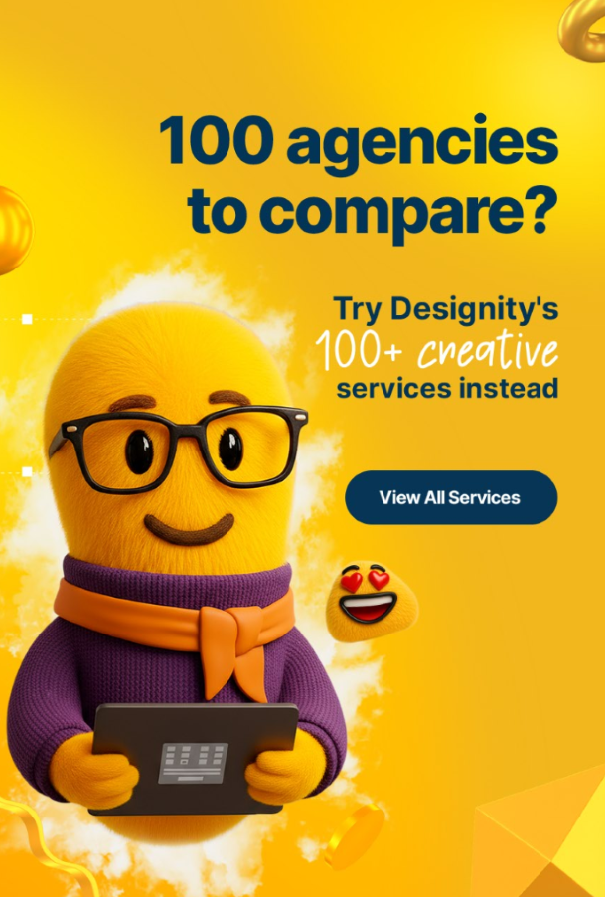Customer lifecycles can be long, they can be short, or they can be somewhere in between.
Depending on what product or service your brand offers its customers, you may be used to any (or all!) of the above.
But no matter how long your customer’s lifecycle is, there are always things you can do to coax your prospects toward a conversion and keep engaging them to encourage a repeat purchase later down the line.
Welcome to lifecycle marketing, a strategic approach to bringing your marketing strategies right to your customers!
How do you do it?
If you’re looking for a guide, you’ve found one, friend!
Today’s blog is taking you through the essentials of lifecycle marketing so that your brand can better engage your customers and keep them coming back for more!
What is Lifecycle Marketing?
Lifecycle marketing is a marketing approach that is all about engaging with your customers throughout the entire customer lifecycle (more on that below).
It's a particularly effective strategy because it recognizes that customers go through various stages as they consider your product and tailors content and messaging to speak to the needs and preferences of your customers at each of these stages.
Here’s a bit more about that customer lifecycle …
The 5 Stages of the Customer Lifecycle

Just like the user journey, customer lifecycles can vary slightly depending on the industry you’re in and your business model, but, often, it looks like this:
- Stage 1: Reach and Awareness — Introducing potential customers to your brand, creating awareness, and capturing their attention. This stage is all about making your brand known to a broader audience.
- Stage 2: Acquisition and Consideration — Customers in this phase actively research and consider your product or service. They compare options, read reviews, and gather information to make informed decisions. The goal here is to position your product or service as an ideal solution to your potential customers’ needs.
- Stage 3: Conversion and Nurturing — The conversion stage is where your prospects decide to make a purchase, becoming paying customers. Once they do, you begin to nurture, which involves post-purchase support and building a positive customer relationship.
- Stage 4: Retention — Post-purchase, your focus turns to retaining customers by ensuring a positive experience. This includes excellent customer service, encouraging product usage, and addressing any customer concerns.
- Stage 5: Loyalty and Advocacy — Satisfied customers transition into loyal advocates who promote your brand. The goal is to encourage happy customers to build brand loyalty by recommending your products, writing positive reviews, sending you user-generated content, and contributing to word-of-mouth marketing.
How to Create a Lifecycle Marketing Strategy
If you are going to give lifecycle marketing a try, you’re going to need the right strategies, otherwise you’ll be spinning your wheels and wasting time and resources on wrong-fit leads and dead ends.
So, to help you out, here are some effective strategies for each stage of lifecycle marketing to engage your prospects wherever they may be!
Stage 1: Reach and Awareness Strategies
The first thing you need to do is to get potential customers to notice here. To do that, you’re going to have to make some noise. A lot of noise.
Below are some strategies to help get you noticed and create brand awareness for your future customers:
Creating User Personas
Start by creating detailed user personas that represent your ideal customers. These personas should include demographics, interests, pain points, behaviors, and whatever else will help you to better understand your target audience and what they’re looking for from your brand.
This will guide your messaging and make sure that it resonates with the right audience.
Knowing your audience will also help you to divide them into distinct segments based on the characteristics you’ve outlined. This allows you to narrow down the right distribution channels to meet them so that you can tailor your marketing efforts even further.
Content Marketing
Develop compelling and relevant content that speaks to the needs and interests of your audience.
If you’re not sure what content works best, consult those user personas you created (there’s a reason that was the first step!) to determine what kind of content your audience wants to see and engage with.
Whether it's blog posts, white papers, videos, or infographics, focus on creating valuable content that’s a delight to view or read and establishes your brand as an authority in the industry.
Get Others in On the Action
Sometimes having some helpers spreading the word about your brand’s greatness can do wonders.
There are a few ways to do this. If you can find a social media influencer in your niche that has a strong following and aligns with your brand, you can collaborate with them and have them showcase your products or services (and vice versa, of course). Their endorsement can significantly amplify your reach and enhance your brand’s credibility.
Word-of-mouth is also a powerful tool in building awareness. You can use referral programs with your satisfied customers and encourage and incentivize them to refer their friends and family!
Optimize Your Content for SEO
If you want to reach more potential customers, you’re going to have to be visible.
To do that, you want to optimize your online content for search engines so that your website and content rank higher when potential customers are searching online for goods and services related to yours.
Here are some steps to optimizing your content:
- Start by making sure that your website is well-structured. All of your important info needs to be prominent and easy to find so that customers don’t get frustrated and click away.
- Next, use a tool like SEMrush or Ahrefs to find relevant keywords and then use those keywords strategically in your headers, alt tags, and written content.
- You also want to have high-quality content on your website. High-quality content encourages more visitors, who stay reading for a longer amount of time. All of that indicates to search bots that you’ve got a website worth seeing and can help to improve your rank.
Paid Advertising Campaigns
Getting your brand in front of new eyes is extremely important, which is why paid advertising campaigns are so effective!
Platforms like Google Ads and social media advertising can help you target specific demographics of your customer base and increase your brand visibility.
Be sure that the ads you are running contain eye-catching graphics, punchy copy, and a clear and easy-to-see CTA that your potential customers can click for more. PPC campaigns are very versatile so select the ones that are right for you, your brand, and your budget, and start targeting the right customers!
Event Participation
Make a splash and engage with your audience by organizing fun and informative events, both online and offline!
Here is a list of possible events you can use!
- Webinars and Online Workshops — Host interactive webinars where you can share insights, and tips, and engage with your audience in real-time.
- Virtual Q&A Sessions — Set up online sessions where your audience can ask questions and get instant responses to create a personal connection.
- Industry Conferences and Exhibitions — Participate in or even sponsor industry-specific conferences. Have a virtual booth or a physical presence to showcase your brand.
- Local Pop-Up Shops — If feasible for your brand, organize pop-up shops in local areas to let people experience your products firsthand.
- Product Launch Parties — Whether online or in-person, throw a party to launch new products. Build anticipation and create buzz.
- Expert Panel Discussions — Gather experts in your field for panel discussions. It adds credibility and provides diverse perspectives.
- Networking Mixers — Arrange casual networking events where your audience can connect with each other and your brand.
- DIY Workshops —Teach your audience something new related to your products or industry. It could be a DIY crafting workshop or a cooking class.
- Charity Events — Collaborate with a cause and organize events where a portion of sales goes to charity. It's a win-win.
- Themed Online Challenges — Create online challenges related to your products or industry. Encourage participants to share their experiences.
- Influencer Takeovers — Let influencers take over your social media for a day, sharing their perspective and bringing in their audience.
- Community Meetups — Host meetups for your brand's community, either virtually or in local areas, fostering a sense of belonging.
- Interactive Product Demos — Demonstrate your products in a fun and interactive way, making it an experience rather than just a showcase.
- User-Generated Content Contests — Encourage users to create content, whether it's videos, photos, or stories, and run contests to showcase the best.
- Educational Seminars — Conduct seminars on topics relevant to your industry to position your brand as an authority.
Stage 2: Acquisition and Consideration Strategies

The second strategy of your lifecycle marketing strategy involves carefully transitioning your prospects from just being aware of your brand to actively considering your products and services.
This is a very crucial phase of the process, so here are some key strategies to acquire and nurture those leads.
Lead Nurturing Campaigns
Once you’ve got a lead, it’s very important to continue engaging to turn that lead into an eventual customer.
Here are some lead-nurturing techniques to keep your leads moving down your marketing funnel:
- Automated Campaigns — Set up automated workflows that deliver targeted content based on user actions and engagement.
- Drip Campaigns — Create a series of scheduled emails to gradually nurture leads with relevant information over time.
- Personalized Content — Tailor your content to address specific pain points and interests to build a personal connection with leads.
- Behavior-Based Triggers — Use triggers based on user behavior, like website visits or content downloads, to initiate personalized interactions.
- Lead Scoring — Use a lead scoring system to prioritize and focus efforts on the most engaged and qualified leads.
Content Strategies
Strategic content is invaluable when guiding prospects toward conversion.
Consider using entertaining and informative blog posts or fun interactive content like polls, quizzes, and games to elevate your content, showcase your value, and drive more engagement with your target audience.
Some content ideas to delight and inform your audience include:
- In-Depth Guides — Develop comprehensive guides that provide valuable insights and solutions to challenges faced by potential customers.
- How-To Content — Offer step-by-step guides and tutorials to showcase product features and benefits.
- Case Studies — Share real-world examples and success stories to demonstrate the practical application and positive outcomes of your products or services.
- Comparison Content — Create content that compares your offerings with competitors, helping prospects make informed decisions.
- Engaging Visuals — Enhance your narrative with eye-catching visuals, infographics, and video to captivate your audience!
Remarketing Campaigns
Sometimes all a prospect needs after interacting with your brand is a gentle reminder of what they’re missing.
Retarget those prospects in the following ways to gently coax them toward taking action:
- Dynamic Ads — Create dynamic and personalized ads that showcase specific products or content based on users' previous interactions.
- Targeted Messaging — Tailor ad messaging to address potential concerns or objections that may have prevented their conversion in the first place.
- Cross-Platform Remarketing — Extend remarketing efforts across a variety of platforms to maximize your visibility and touchpoints.
- Abandoned Cart Campaigns — Implement campaigns specifically targeting users who abandoned their shopping carts, encouraging them to come on back to complete the purchase.
Email Marketing
Lifecycle email marketing is another excellent tool for nurturing leads and, ultimately, driving more conversions.
To create the most effective email marketing campaign that you can, be sure to take advantage of marketing automation to streamline repetitive tasks, personalize your content based on user behavior, and keep your leads nurtured with well-timed and relevant communication.
Before you get started, be sure you segment your email lists based on your prospect’s demographics, behaviors, and preferences for more relevant and personalized customer communication.
Be sure to regularly analyze the performance of your campaigns so that you can adjust your strategy as you go and continue guiding your customers as effectively as you can through their journey!
Social Proof
Building trust is a vital part of the acquisition and consideration stage of the lifecycle.
One way to do this is to showcase your satisfied existing customers by using their testimonials and reviews and featuring their user-generated content on your socials, landing pages, websites, and more.
It also helps to have case studies up on your website so that prospective customers can see how your products and services have already benefited customers just like them. It’s a powerful tool to showcase not just your products but also your customer service and your brand’s dedication to exceeding their customer’s expectations.
Cybersecurity can be another issue and if potential customers think your website or landing pages look sketch, they won’t go any further. Avoid that situation by displaying trust badges, certifications, and awards your brand has received to make sure that your customers can be confident in choosing your brand.
Free Trials and Demos
For some customers, trying is believing and they’ll need to experience your product or service firsthand in order to be swayed to convert.
If it’s feasible for your brand, consider offering things like free trials or trial extensions for users who show active interest in your services. If your brand has a physical product, then demo videos or live interactive demos can be a great way to show curious visitors what you have to offer!
Stage 3: Conversion and Nurturing Strategies
As your prospects move into the third stage of the customer lifecycle, your focus will shift to transforming leads into paying customers.
In this phase, you’ll want to strategically guide your customers through the decision-making process and show them all of the benefits of conversions.
Here are some marketing techniques to help you get that done:
Limited-Time Offers
Build up a sense of urgency with limited-time offers that your potential customers can’t resist!
Limited time and promotional or seasonal offers are a strategic approach designed to captivate those potential customers who are sitting on the fence and encourage them to make a decision.
Interactive Product Demos
Nothing brings your offerings to life like interactive product demos!
This offers your potential customers a hands-on experience that can really bring home the benefits of your product or software in a way that just hearing about it can’t. Use these demos to showcase product features, benefits, and functionalities for a more immersive experience.
Customer Success Stories
Turn your previously satisfied customers into advocates!
Share real-life narratives of the customers who have already experienced positive outcomes with your product or service to create an authentic and relatable narrative.
Fearing these success stories on your website, landing pages, social media, or in email campaigns can act as the social proof that your prospect needs for them to be swayed into giving your brand a shot!
Optimized Onboarding
And once your prospect converts, remember that the journey isn’t over!
Provide your new customer with an immediate positive experience by making your onboarding process as seamless and helpful as possible. No matter what type of product or service your brand offers, onboarding sets the stage for a long-term relationship.
Welcome your customer to your brand with a personalized greeting that expresses gratitude for their choice. If it works with your offerings, provide clear and guided steps for setup and make any resources on your website clearly marked and easy to find.
It also helps to include contact information and steps for any possible troubleshooting your new customer might have.
Post-purchase Support
Your commitment to your new customer’s satisfaction should continue with dedicated post-purchase support!
This is instrumental in making sure that your customers feel supported and confident in their decision to convert.
Here are steps you can take to optimize your post-purchase support:
- Timely Assistance — Offer timely assistance to address any post-purchase queries or concerns. Promptly respond to customer inquiries, providing clear and helpful information to resolve issues efficiently.
- Proactive Communication — Initiate proactive communication to check in on customers. Seek feedback on their experience and offer assistance before they reach out with potential concerns. Proactive communication demonstrates your ongoing commitment to their satisfaction.
- Knowledge Base Access — Make your knowledge base easily accessible. Provide comprehensive resources, FAQs, and troubleshooting guides to empower customers to find answers independently. A well-organized knowledge base enhances the overall post-purchase support experience.
- Multi-Channel Support — Offer support through various channels such as email, chat, or phone to accommodate diverse customer preferences. Ensure that customers can reach out through their preferred communication method, fostering a seamless and convenient support experience.Resolution TransparencyWhen addressing issues, maintain transparency in the resolution process. Keep customers informed about the steps being taken to resolve their concerns, setting clear expectations for resolution times and outcomes.
- Continuous Improvement — Use customer feedback and support interactions as valuable insights for continuous improvement. Identify patterns in customer queries to enhance product information, user guides, or other support materials, contributing to an overall improved post-purchase support experience.
- Proactive Resources — Provide additional resources, such as tips, best practices, or updates related to the purchased product or service. Proactively sharing relevant information ensures that customers get the most out of their purchase and feel valued as part of your brand community.
Stage 4: Retention Strategies
As your customers progress into the retention stage of the lifecycle, it’s time to shift your focus toward strengthening your relationship with them.
Here are some key strategies to keep your customers engaged:
Personalized Communication
Engage with your customers with personalized and relevant communication.
Use your data on their preferences, past interactions, and purchase history to tailor your messages and let them know that you value their business!
- Personalized Emails — Tailor email content based on customer preferences, purchase history, or browsing behavior.
- Customized Product Recommendations — Recommend products or services based on the customer's past purchases or interests.
- Exclusive Offers — Provide special discounts, promotions, or early access to loyal customers.
- Content Recommendations — Suggest relevant blog posts, articles, or content based on the customer's interests.
- Personalized Thank-You Messages — Express gratitude for a specific action, such as a recent purchase or positive review.
Regular Check-Ins and Surveys
Depending on your product or service, some time may go by before your customer is ready for a repeat purchase.
Keep your brand top of their mind with regular check-ins into your post-purchase strategy.
Here are some ideas:
- Survey Requests — Seek feedback through personalized surveys to understand customer preferences and satisfaction.
- Reorder Reminders — Remind customers to reorder products based on their purchase history and usage patterns.
- Company Updates — Share information about upcoming product launches, promotions, or relevant content. Offering exclusive deals to loyal customers reinforces their importance to your brand and encourages them to explore what's new, fostering continued engagement.
- Proactive Problem Resolution — Use regular check-ins as an opportunity for proactive problem resolution. Address any potential issues or concerns before they escalate to showcase your commitment to customer satisfaction and reinforce a positive customer experience.
VIP Treatment
Reward your most loyal customers with regular check-ins that offer VIP treatment and showcase all of the benefits of being your customer.
There are plenty of ways to do this, but if you need some suggestions, here you go!
- Exclusive Invitations — Invite customers to exclusive events, webinars, or product launches based on their interests.
- Exclusive Events — Extend invitations to tailored events like product launches, behind-the-scenes tours, or curated experiences, reinforcing a sense of exclusivity.
- Webinars and Workshops — Host specialized sessions offering in-depth insights, expert discussions, or hands-on experiences, positioning VIP customers as key insiders.
- Product Previews and Launches — Grant VIPs exclusive access to product previews and launches, making them feel valued and integral to your brand's success.
- Exclusive Offers and Discounts — Incorporate special pricing, limited-time promotions, or unique discounts, reinforcing loyalty and encouraging continued engagement.
- Personalized Gift Experiences — Consider tailored gifts aligning with preferences or past interactions, showcasing your attentiveness and appreciation.
- Priority Customer Support — Offer expedited assistance, personalized solutions, and a dedicated support channel, ensuring a seamless and positive customer experience.
- VIP Loyalty Programs — Implement tiered loyalty programs with increasingly exclusive perks based on customer loyalty.
- Early Access to Sales or Promotions — Provide VIPs with early access to sales, promotions, or limited-edition releases, enhancing a sense of privilege and exclusivity.
Celebrations
Everyone likes to feel special!
Celebrations are a great reason to reach out and check in with your new customer. Make use of automated emails and social media to shout out special days like birthdays, holiday greetings, or anniversary milestones with your brand.
Sometimes, it’s the little things that count.
Stage 5: Loyalty and Advocacy Strategies

Once your customer has been with you for some time, naturally you’ll want to strengthen your bond with them.
Show them your appreciation with unique benefits and incentives for their continued support. Implementing the following programs can help you create a sense of belonging and keep your customers loyal to your brand.
Exclusive Loyalty Programs
Loyalty programs are a great way to reward customers for their repeat business!
Here are some ideas:
- Reward Tiers — Structure the program with personalized tiers offering increasingly exclusive benefits based on engagement and purchase history. Be sure to include special discounts, early access to new products, and personalized gifts!
- Members-Only Events — Grant exclusive access to virtual or in-person events, fostering a sense of community and appreciation among program members.
- Limited-Edition Products — Introduce exclusive, limited-edition products available only to loyalty program members to create urgency and exclusivity.
Community Building
Build up a sense of community and belonging around your brand by creating a space where your customers can connect with each other and with you. A sense of community promotes customer retention and turns loyal customers into brand advocates!
Here are some ideas for building thriving communities:
- Online Forums and Groups — Establish online forums or groups where customers can discuss your products, share experiences, and offer advice. Actively participate in these spaces to create a sense of brand involvement and encourage positive interactions among community members.
- Engaging Content and Challenges — Generate engaging content and challenges within the community. This could include product-related quizzes, photo contests, or discussions about upcoming launches. Encouraging participation fosters a vibrant community spirit.
- Expert Q&A Sessions — Host expert Q&A sessions within the community. Invite industry experts or key figures from your brand to answer questions and share insights. This not only adds value to community members but also positions your brand as an authoritative and engaged participant.
Referral Programs
Referral programs leverage your customer’s satisfaction with your brand and let them bring in new business for you.
Encouraging and incentivizing your existing customers to refer their friends and family not only expands your customer base but reinforces loyalty! Consider incentivized referral rewards that reward both the referrer and the new customer and be sure to send personalized thank yous once you do!
Social media tends to make this much easier to do, so take advantage by making it possible for your customers to easily share referral links or promotions on your social media platforms of choice.
User-Generated Content Campaigns
Word-of-mouth sells and user-generated content helps you take that one step further.
By encouraging your customers to create and send in user-generated content, you can instantly have authentic marketing material that not only shows the wonders of your product or service but also acts as social proof of just how awesome it is!
Here are some ways to use UGC as a part of your advocacy strategies:
- Contests and Hashtag Campaigns — Organize contests or hashtag campaigns prompting customers to share content related to your products. This could include photos, videos, or written testimonials. Offer incentives, such as featured spots on your website or exclusive discounts, to encourage participation.
- Highlighting Customer Stories — Regularly feature customer stories on your website, social media, or marketing materials. This could include interviews, testimonials, or visual content showcasing how your products have positively impacted their lives. Humanizing your brand through these stories enhances customer loyalty.
- Interactive Challenges — Create interactive challenges that encourage customers to showcase their creativity or product usage. This could range from DIY projects using your products to creative interpretations of your brand. Recognize and reward your contributions to motivate others to join in!
If you’re looking for additional ways to use this type of content for your marketing strategies, check out our blog on the power of user-generated content!
Benefits of Lifecycle Marketing
Lifecycle marketing offers several benefits for businesses looking to build and maintain strong relationships with their customers.
Here are some of those benefits now:
- Customer-Centric Approach — Lifecycle marketing focuses on understanding and addressing the needs of customers at different stages of their journey.
- Improved Customer Retention — By providing ongoing value and support, businesses can enhance customer satisfaction, leading to increased loyalty and retention.
- Personalized Communication — Tailoring marketing messages based on the customer's lifecycle stage allows for more personalized and relevant communication.
- Increased Customer Lifetime Value — Building lasting relationships often results in higher customer lifetime value, as satisfied customers are more likely to make repeat purchases.
- Efficient Resource Allocation — Lifecycle marketing helps allocate resources more efficiently by targeting efforts where they are most impactful in the customer journey.
- Better Understanding of Customer Behavior — Analyzing customer interactions at various stages provides valuable insights into behavior, preferences, and pain points.
- Enhanced Cross-Selling and Upselling — Knowing the customer's journey allows businesses to identify opportunities for introducing additional products or services.
- Effective Problem Resolution — By addressing customer concerns promptly during the lifecycle, businesses can prevent dissatisfaction and potential churn.
- Data-Driven Decision-Making — Utilizing data from various lifecycle stages enables businesses to make informed decisions and continuously improve strategies.
- Positive Brand Image — Providing a seamless and customer-focused experience contributes to a positive brand image, fostering trust and credibility.
<div class="c-blog_comp-cta cc-component-1"><div class="c-blog_comp-cta-left"><div class="c-blog_comp-cta-left-wrap"><img src="https://global-uploads.webflow.com/61cdf3c5e0b8155f19e0105b/6369722e59155470b6840033_Potential-clients.png" loading="lazy" alt="" class="c-blog_comp-cta-left-img"></div></div><div class="c-blog_comp-cta-right"><div class="c-blog_comp-content"><div class="c-text-wrapper cc-mb-32"><div class="c-title-4 cc-bold"><strong>Want to save money without sacrificing the quality?</strong></div></div><div class="c-text-wrapper"><div class="c-text-2">Say goodbye to traditional, expensive agencies and unreliable marketplaces. Say hello to Designity.<br></div></div></div><div class="c-blog_comp-wrapper"><a href="/pricing" target="_blank" class="c-button cc-primary cc-inverted w-button"><strong>Get Your 2-Week Trial</strong></a></div></div></div>
Ready to Make the Most of Your Customer’s Lifecycle?
If you’re eager to try out these lifecycle strategies on your target audience only you lack the creative skills, the time, and the manpower to get it all done, then no worries, friend.
All is not lost.
Why not partner with Designity to make your dreams come true?
Designity is made up of the top 3% of US-based talent and our team is ready to create all of the marketing assets you need to send your lifecycle marketing campaign to new heights!
Leading the charge will be your account’s own dedicated Creative Director, a design and marketing expert who will handle everything from sourcing and managing the right creative talent for your projects to helping you strategize and create your ultimate marketing plan.
It’s the perfect setup! Why not have a look at our portfolio to see the marketing assets we’ve created for businesses just like yours?
And when you’re ready, book your demo call to get started with your two-week, no-obligation trial.
We’re ready when you are!










